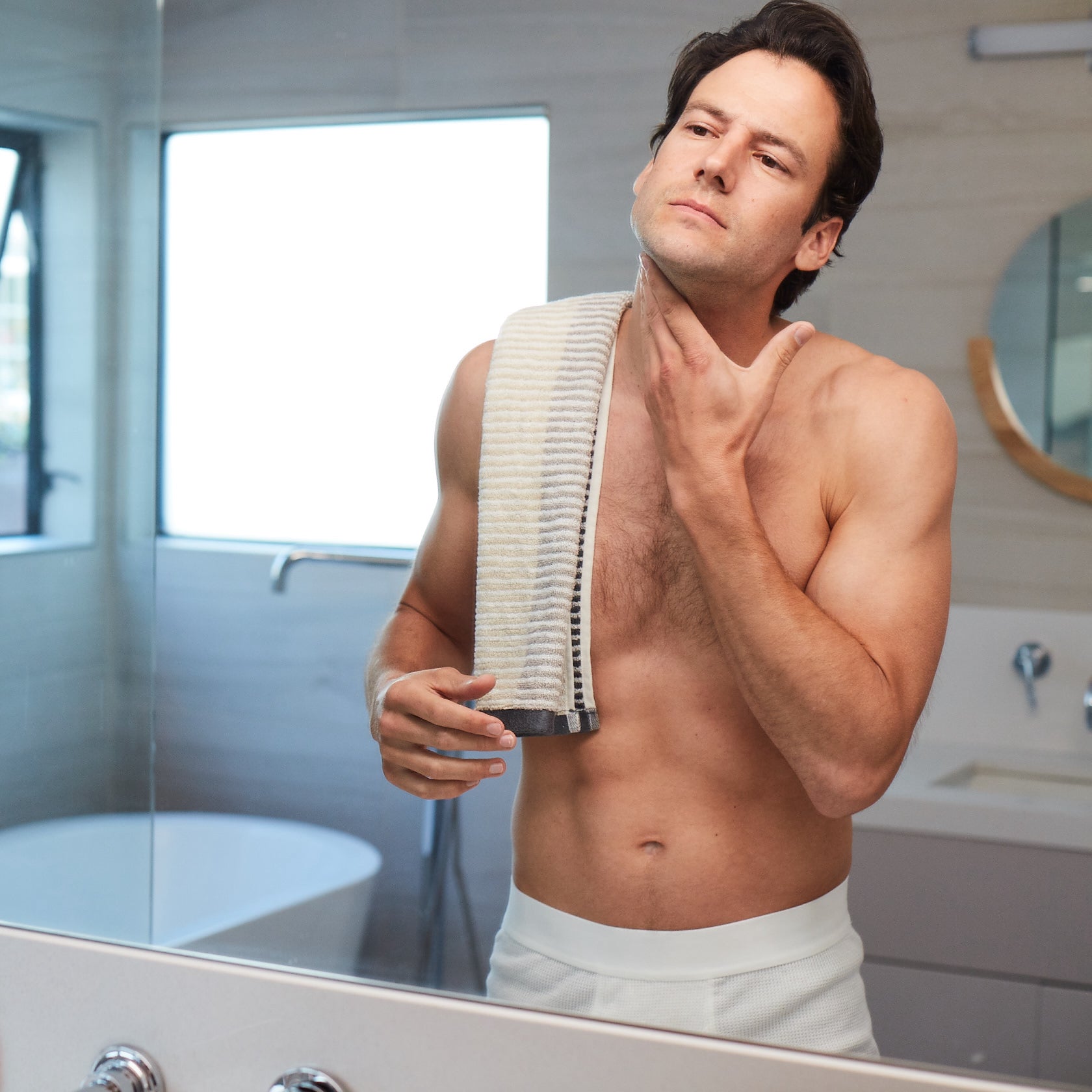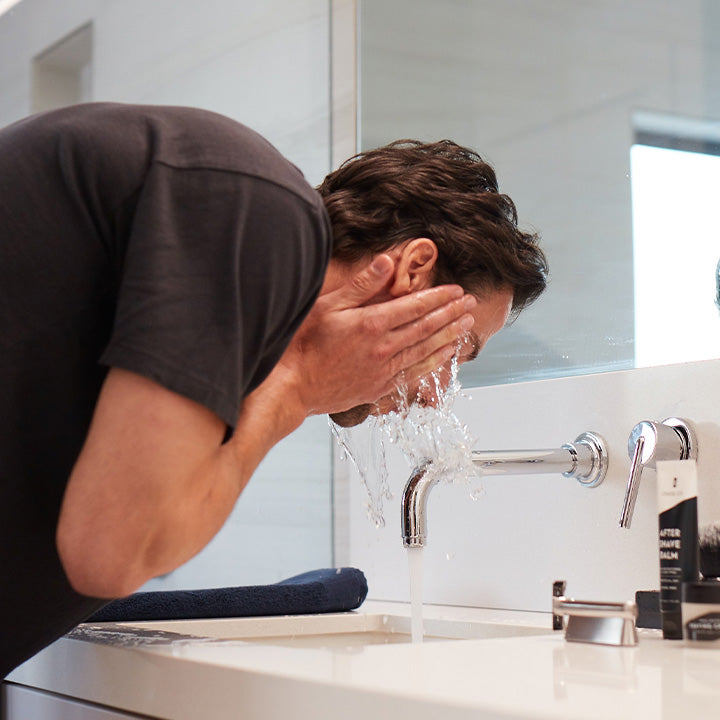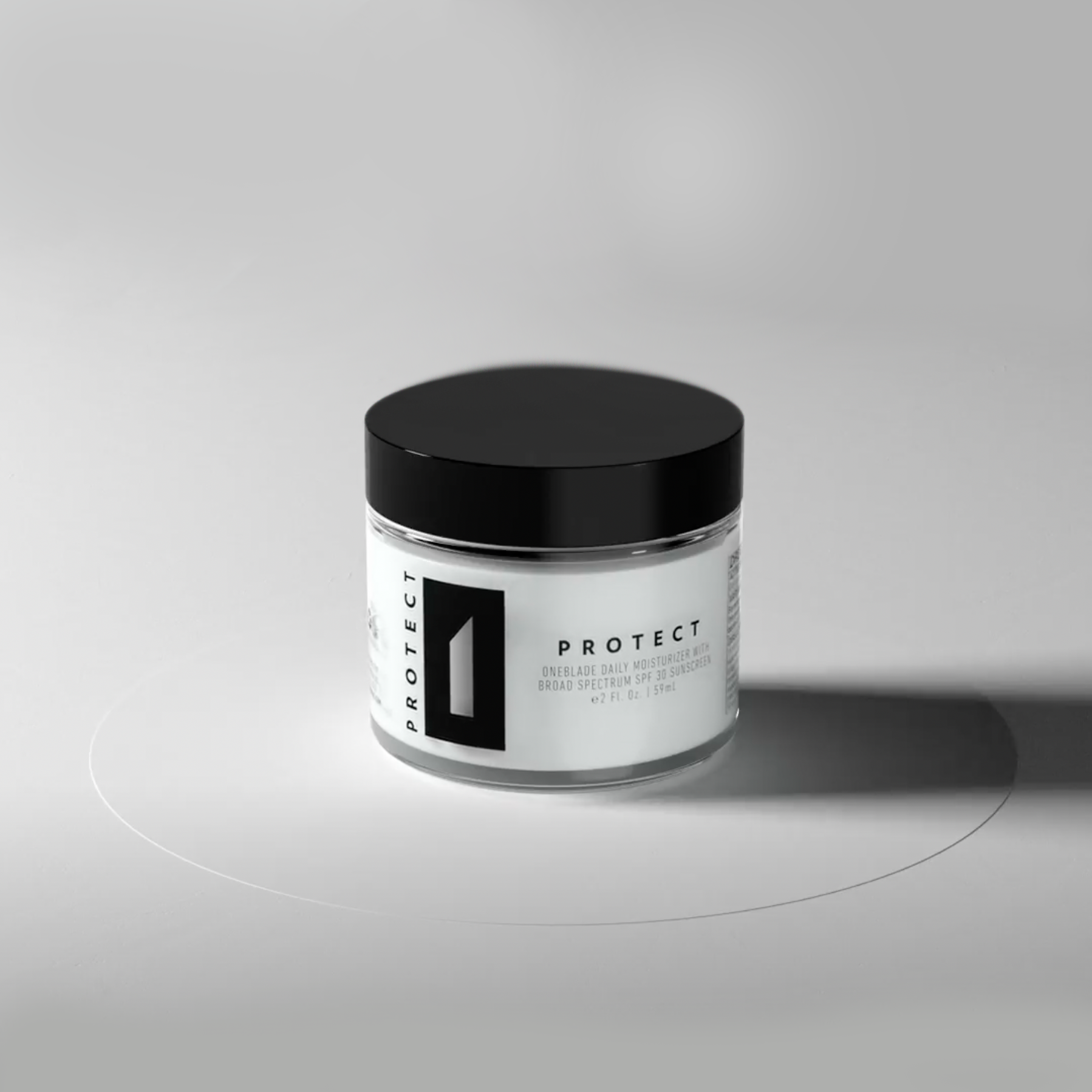A SIMPLE AND EFFECTIVE SKIN CARE ROUTINE

It’s no secret that the healthier your skin is the better your shave experiences will be. The good news is, men are moisturizing, toning, exfoliating, and protecting their skin better than ever before.
If you’re looking to upgrade your skincare routine and don’t know where to begin, you came to the right place. Before we dive into the three step skin care routine, let’s cover some foundational knowledge.
SKIN CARE BASICS

Do you know your skin type? Knowing your skin type will help you determine which skin care products are the best products for you. There are five basic skin types:
- Normal: your skin stays relatively oil free most of the day and doesn’t get irritated or dry easily. Acne is not common.
- Dry/Sensitive: your skin gets easily irritated and often feels dry or tight.
- Oily: your skin has a natural shine to it, and often has build up or acne.
- Combination: Have you heard of the T zone? Imagine your face has a “T” on it. The horizontal bar of the T runs across the forehead and the vertical bar runs down to the tip of the nose. Combination skin types have an oily T zone, and dry/sensitive cheeks.
- Aging: your skin is looking worn out, wrinkled and has age spots.
What does a typical day look like for you? Your personal environment may impact your skin care routine. Take into consideration the climate of the area you live in (humid/dry), as well as where you spend most of your time (indoors/outdoors).
The majority of skin care products are labeled based on skin type.
SKIN CARE LINGO
Knowing the common terminology for skin care products will be helpful in your search for your perfect products. Here’s a small list of the most common words:
- HUMECTANT: an ingredient that works together with other ingredients in the same product to increase skin absorbency, make the product’s effects long-lasting, and minimize skin dehydration. Humectants include: glycerol, propylene glycol, sorbitol, lactic acid, and urea.
- MOISTURIZER: ingredients designed to increase your skin’s water content by making the external layers of the skin softer and more pliable. Moisturizers work by reducing evaporation, not by putting water into the skin. Moisturizers are not single ingredients, but a combination of ingredients (like oils and humectants).
- TONER / ASTRINGENT: used to cleanse the skin and shrink the appearance of pores. Astringents are the strongest form of toner, containing a high proportion of alcohol (20-60%). Toners are milder astringent solutions and used in the relief of minor skin irritations (e.g. superficial cuts, rashes, insect bites, or fungal infections). Normally recommended for oily skin types as they dry the skin, and are best applied only to problem areas of skin to prevent excessive drying. Toner/astringent ingredients include: alum, oatmeal, acacia, yarrow, witch hazel, zinc oxide, zinc sulfate, alcohol, and distilled vinegar.
- HYDROSOL: usually produced by steam distillation, hydrosols are products of essential oils from aromatic plants. Think of these as diluted essential oils. Common hydrosols include floral water, herbal distillates, hydrolate, herbal water, or essential water. Because hydrosols are produced at high temperatures and are somewhat acidic, they tend to inhibit bacterial growth, and can help men’s skin return to a normal pH (since most shaving products are alkaline, and hydrosols are acidic).
Now that we’ve covered the basics, let’s talk about the skin care routine. Remember, if you have any specific questions about which products to use, how frequently to complete each step, etc. consult a dermatologist.
THE SIMPLE AND EFFECTIVE SKIN CARE ROUTINE

STEP 1: CLEAN
Washing your face twice a day (morning and evening) using warm water and a facial cleanser specifically made for your skin type is quite possibly the most important step of this routine. Regularly washing your face will remove excess oil, bacteria, and dirt.
When cleansing, start from the center of the face (nose, forehead) and work your way outward. Don't forget to wash your chin and neck.
If you're not going to shave immediately after washing your face, use cool water for your final rinse. Cool water helps close the pores and prevents impurities from settling in.
When drying your face, pat-dry with a clean, dry towel. You know you’ve found a product that works well with your face when your face feels clean but not dried out.
STEP 2: MOISTURIZE

Often the biggest difference between healthy looking skin and tired looking skin is the degree to how hydrated your face is. Using a facial moisturizer after cleansing helps keep your skin cells full of water, preventing oil and other impurities from entering into the pores. It can also provide some antiaging benefits via nutrients and stimulating collagen production.
After patting your face dry from washing, apply a thin layer of face moisturizer all over, especially targeting your forehead, around the eyes and your cheeks. You'll only need a dab rubbed into wet hands and gently massaged onto the face (be extra gentle going under the eyes).
Note: using an aftershave balm can substitute for a moisturizer if you shave immediately after cleaning.
STEP 3: PROTECT

We recommend you protect your skin in two ways:
Aftershave: applied immediately after shaving, aftershaves provide moisturization, irritation relief, and protection from the elements. Aftershaves are split into four categories:
- Balms have a thicker consistency, are heavier-feeling on the skin and typically provide more irritation relief and moisturization (particularly in cold or dry climates).
- Splashes are more runny and generally contain a combination of toners, astringents, and hydrosols to cleanse and provide a degree of antiseptic or antibacterial protection to the skin.
- Milks generally has a consistency between a balm and a splash, and usually have some specialized ingredients.
- Gels are lighter-feeling than a balm and generally is milder in strength
Apply an aftershave like you would a moisturizer.
Sunscreen: The ultimate protection for your skin, during any season, is sunscreen. A good rule of thumb: if you are going to be outside for more than 30 mins at a time use a SPF30 or SPF50 sunscreen. We recommend you use sunscreens that do not contain oxybenzone. Instead, use natural sunscreens with titanium dioxide and zinc oxide, like PROTECT
SUPPLEMENTAL SKIN CARE STEPS
If you’re looking to up your skincare game, here are some supplemental steps to consider:
- EXFOLIATION: Exfoliation generally refers to removing dead skin cells, build up, and other impurities on your face. It’s recommended to exfoliate your face every 7-10 days. The process of shaving is also a mild exfoliant, so there’s no need to overdo the exfoliating product.
- ANTI-AGING CREAM: Using an anti-aging cream before bed assists the body’s natural restorative process as you sleep, reducing the speed of wrinkles and minimizing fine lines.
- EYE CREAM: As you sleep, fluid builds up underneath the eyes, causing blood to push up against the skin, which in-turn causes dark circles and bags. It can take a while after you wake up for these unsightly conditions to go away and that is where an eye cream comes in. If you’re a guy who is very active, day and night (if you know what I mean...), a men’s eye cream can be your secret weapon.
- LIP BALM: An often-overlooked part of facial health is lip health. Lips don’t have sweat or oil glands to provide moisture, so to achieve smooth lips use a lip balm that contains moisturizing ingredients (e.g. shea butter, vitamin E, olive oil, and honey). You can also exfoliate your lips with a soft bristle toothbrush by gently buffing away dead skin cells every 7-10 days.
Reader Questions - AMA (Ask Mark Anything) Round Three:
Several readers, including Chris and Mike, have asked a similar question: how many shaves can you get from a blade before replacing it?
There are so many variables revolving around razor blades that it can be a surprisingly complex question to answer!
OneBlade suggests replacing a blade with every shave, and there is merit to that. The Feather FHS blade is unlike a lot of blades on the market--it has a higher performance design but the trade-off is shorter life.
If you really want to wring every bit of life out of the blade you can remove it from the razor and dry it with a hair dryer. Alternatively you can immerse the blade in some light cooking oil. Either way will slow oxidation of the blade edge.
But even then don’t expect a significantly longer life. I can get 5 shaves at most if I maintain the blade carefully. If I don’t bother about blade life--which is most of the time--I can get two or perhaps three shaves before I have load a new blade.
Joe asks:
…Is it better to shave every other day as opposed to everyday? I find I get a closer shave using one blade if I do not shave everyday. I'm retired so I do not have to be clean shaven everyday.
Some people do experience a better shave by shaving every-other-day. It depends on some variables like the speed of hair growth and even the type of shave cream or soap you’re using. But there is nothing “wrong” with not shaving every day. What you want to avoid is waiting until your stubble is so long it causes irritation when you shave.
